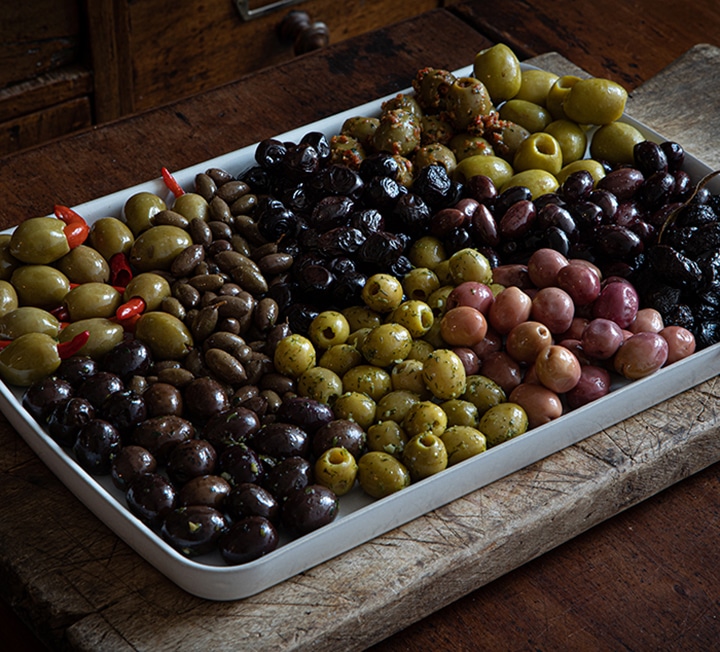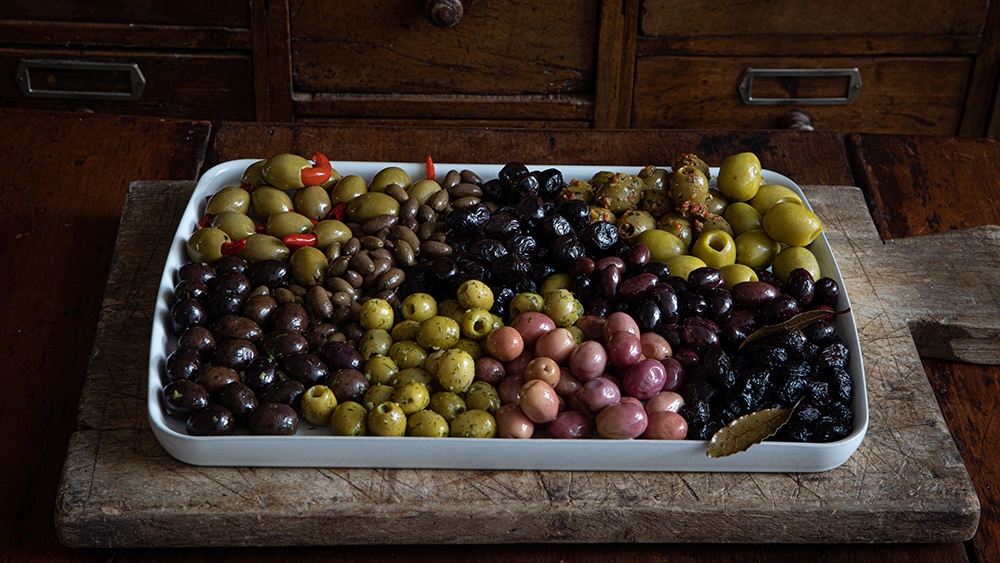Dress to impress: olives
Ed Smith on the Market ingredients that, with minimum effort and maximum effect, can embellish a finished dish. This time: olives


“IT’S NOT THAT YOU NEED TO MATURE BEFORE LIKING OLIVES. IT’S THAT YOU’RE NEVER TOO YOUNG TO DISLIKE BAD ONES”
Images: Regula Ysewijn
I’ve heard, many times, that our palates need to “grow-up” before we enjoy olives; that from the moment we’re born the total number of taste buds we have is in permanent decline. Strong, bitter flavours like anchovies, radicchio and olives are the ones we decline into.
So I was confused when my now toddler son began eating olives at an extraordinary (and perhaps alarming, given salt content) rate on pretty much the first occasion he gummed away at solids. What did this mean? Could we declare already that he was a man of great taste? Or, did he, in fact, not taste anything?
Disappointingly, I soon found out he was not the child prodigy I assumed he was; most other babies and toddlers I’ve met in the last few years love olives too. Why is it, then, that this ‘too adult for you’ refrain is so widely accepted?
The answer came when he ate a pizza topped with dull, briny, soapy, pitted black olives. Rather than wolf them down, he spat them out and ultimately rejected the pizza altogether. He did the same with some olives he’d commandeered at a party a few months ago, discarding the bowl and shouting “they’re yucky and disgusting”. It’s not that you need to mature before liking olives. It’s that you’re never too young to dislike bad ones.
All of which is a long-winded way to note that my horrendous foodie of a son, along with anyone else who chooses to source them, is spoiled by the quality of olives available from Borough Market. These are true taste bombs, ready-made to transform our meals.

Options include the Greek varieties from Oliveology: straight-up organic, handpicked kalamatas; others marinated in the heady aniseed of ouzo; and remarkable Throuba olives, that have ripened and matured on the tree, without salt. They’re uniquely sweet-bitter, and particularly good thrown over a tomato and feta salad or chopped into a tapenade.
I love The Turkish Deli’s ink black Gemlik duble olives, so rich, savoury and somehow honeyed too. There’s a hake, cherry tomato and green bean bake recipe in The Borough Market Cookbook that suggests using them to punctuate the other flavours. Other olives exist, of course, but few provide the near maple-bacon impact of those particular pearls.
I love cruising around Borough Olives’ wooden pots of marinated Spanish and Greek olives. You can disappear down a number of olive shaped holes there – the meaty gordals, the sweet manzanillas, the black or green, the ones stuffed with peppers, the ones marinated in lemon and parsley or tomato and basil. In the end, it doesn’t really matter. Drop some in a tomato-based stew with chicken or squid, warm a few with anchovies and creme fraiche and pour over a pork chop, blitz quickly in a blender, utilising the marinade plus a little more oil to make tapenade, or chop them roughly into something between a salsa and a salad, as with the short rib recipe here. They’re an instant hit of flavour, something with enough power to both enliven subtle ingredients and match bawdy ones. When meal planning, don’t panic: there’s very little chance that whoever you’re feeding doesn’t like olives; they just haven’t tried these ones yet.
See Ed’s recipe for paprika & sherry short ribs with deli olives.


